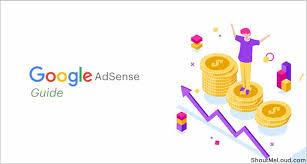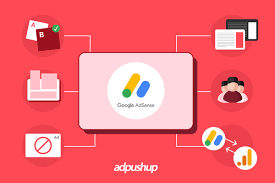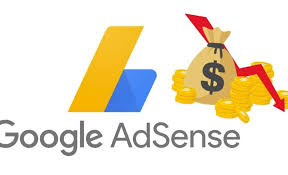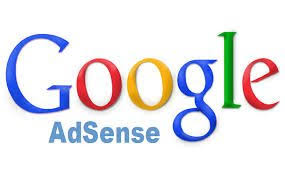For website owners seeking to generate revenue, Google AdSense stands as a powerful and accessible tool. By displaying relevant advertisements on your site, you can earn money based on user interactions. This comprehensive guide will walk you through the intricacies of Google AdSense, from initial setup to advanced optimization techniques, empowering you to monetize your content effectively.

1. Understanding Google AdSense:
Google AdSense is an advertising program run by Google.1 It allows website owners to display text, image, video, or interactive advertisements on their websites.2 These ads are targeted to site content and audience, ensuring relevance and potentially higher click-through rates (CTR).3
- How it Works: Publishers insert a small piece of code onto their websites. Google’s algorithms analyze the website’s content and match relevant ads from its vast network of advertisers.4
- Payment Model: AdSense primarily operates on a cost-per-click (CPC) or cost-per-thousand-impressions (CPM) basis. You earn money when users click on ads or when ads are displayed on your site.
- Ad Formats: AdSense supports various ad formats, including display ads, text ads, in-feed ads, in-article ads, and matched content.5
2. Setting Up Your Google AdSense Account :
- Eligibility: Ensure your website complies with Google’s AdSense Program Policies (https://support.google.com/adsense/answer/48182?hl=en). Your content must be original, high-quality, and adhere to guidelines regarding prohibited content.
- Sign-Up Process: Visit the Google AdSense website (https://www.google.com/adsense/start/) and create an account using your Google account.
- Website Verification: Google will verify your website ownership by requiring you to place a code snippet on your site.6
- Payment Information: Provide your payment details to receive earnings.
3. Ad Placement and Optimization:
- Ad Placement Strategy: Experiment with different ad placements to find the optimal positions for maximizing visibility and CTR. Consider placing ads above the fold, within content, and in the sidebar.
- Ad Unit Sizes and Types: Use responsive ad units to ensure ads display correctly on various devices. Experiment with different ad sizes and formats to find the ones that perform best.
- Auto Ads: Utilize Google’s Auto Ads feature to automatically place ads on your website.7 This can save time but requires careful monitoring.
- AdSense Policy Compliance: Always adhere to Google’s AdSense policies to avoid account suspension. Avoid click fraud, artificial traffic, and placing ads on pages with prohibited content.
- Mobile Optimization: Ensure your website and ads are mobile-friendly. Google prioritizes mobile-first indexing, and mobile traffic is significant.8
4. Maximizing AdSense Revenue:
- High-Quality Content: Create engaging and valuable content that attracts and retains visitors. High-quality content leads to higher traffic and increased ad impressions.
- Traffic Generation: Drive traffic to your website through SEO, social media marketing, email marketing, and other promotional strategies.
- Keyword Optimization: Optimize your website content for relevant keywords to attract targeted traffic.9
- User Engagement: Encourage user engagement by adding interactive elements, comments sections, and social sharing buttons.
- Analyze Performance: Use Google Analytics (https://analytics.google.com/) and AdSense reports to track your website’s performance and identify areas for improvement.
- A/B Testing: Conduct A/B tests to compare different ad placements, ad units, and website designs to optimize for maximum revenue.10
- AdSense Experiments: Utilize Google AdSense’s built-in experiments to try different settings and discover what works best for your site.1

5. Understanding Key AdSense Metrics:
- Page Views: The number of times your website pages are viewed.
- Ad Impressions: The number of times ads are displayed on your website.
- Click-Through Rate (CTR): The percentage of ad impressions that result in clicks.
- Cost Per Click (CPC):12 The amount you earn for each ad click.
- Revenue Per Thousand Impressions (RPM): The estimated earnings per 1,000 ad impressions.
- Estimated Earnings: The total amount of money you’ve earned from AdSense.
6. Addressing Common AdSense Issues:
- Limited Ad Serving: If you see limited ad serving, it could be due to policy violations or low-quality traffic.
- Account Suspension: Google may suspend your account for policy violations.13 Review Google’s policies carefully and address any issues promptly.
- Low CTR: A low CTR could indicate poor ad placement, irrelevant ads, or low-quality traffic.
- Payment Issues: Ensure your payment information is accurate and up-to-date.
7. Best Practices for Long-Term Success:
- Focus on User Experience: Prioritize user experience over ad revenue. Avoid intrusive ads that disrupt the user journey.
- Build a Loyal Audience: Cultivate a loyal audience by providing valuable content and engaging with your visitors.
- Stay Updated: Keep up with the latest AdSense policies and best practices.
- Diversify Revenue Streams: Don’t rely solely on AdSense. Explore other monetization methods, such as affiliate marketing, sponsored content, and selling your own products.
- Patience and Persistence: Building a successful AdSense revenue stream takes time and effort. Be patient and persistent in your efforts.

8. AdSense and SEO:
- Content Quality: High-quality, original content improves both SEO and AdSense revenue.14
- Page Speed: Fast loading speeds enhance user experience and improve SEO.15
- Mobile-Friendliness: Google prioritizes mobile-friendly websites in search rankings.16
- Keyword Relevance: Relevant keywords improve both search rankings and ad targeting.
Conclusion:
Google AdSense offers a valuable opportunity for website owners to monetize their content. By understanding the program’s intricacies, optimizing ad placements, and focusing on user experience, you can maximize your earnings and build a sustainable revenue stream. Remember to adhere to Google’s policies, prioritize high-quality content, and continuously analyze and optimize your website for long-term success.







Leave a Reply